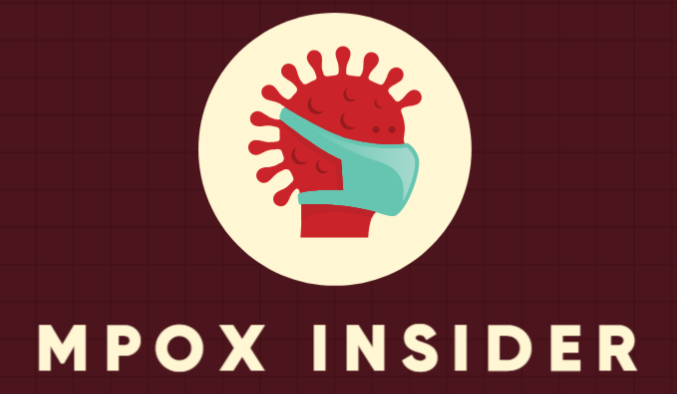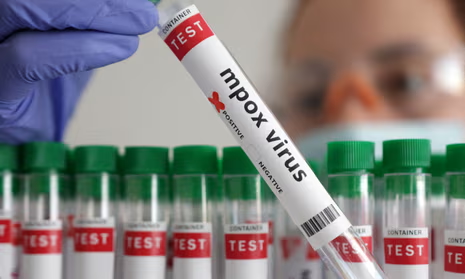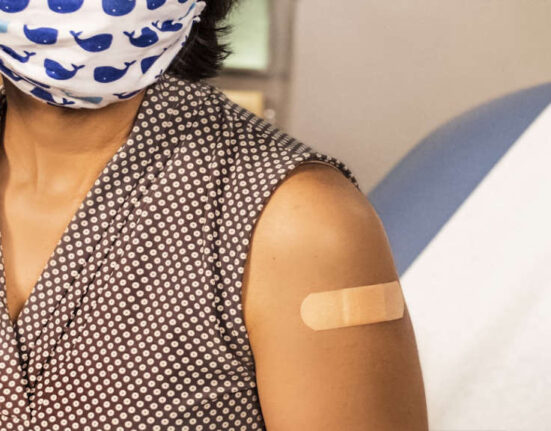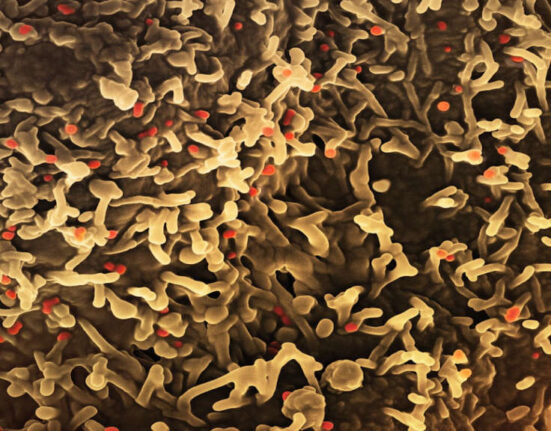In recent years, a growing concern has emerged regarding the disease commonly known as mpox. With its origins and transmission patterns still being studied, many individuals are left wondering, is mpox deadly? As we delve into this topic, it’s crucial to evaluate its implications for various populations, including children and adults alike. Understanding the symptoms, transmission risks, and available treatment options can offer clarity amid the uncertainty. Although the disease has garnered attention, the reality surrounding its severity remains a topic of discussion. This article aims to unpack the risks associated with mpox and shed light on pertinent questions such as whether it poses a significant threat to human health.
Main Points
- Exploring the potential severity of mpox for different age groups.
- Identifying key symptoms and transmission risks associated with the disease.
- Discussing treatment options and preventive measures available to the public.
- Reviewing statistics and evidence to better understand the threat of mpox.
Understanding Mpox: Origins and Transmission Pathways
The rise of Mpox, or monkeypox as it was traditionally known, has led to a significant public health focus in recent years. Its emergence is a reminder of how interconnected our world is, as well as the complexities involved in understanding infectious diseases. So, what exactly is Mpox, and how did it come to be a concern for global health?
Origins of Mpox
Mpox was first identified in monkeys in 1958, leading to its initial name. However, those pesky primates are not the only carriers; rodents also play a part in its lifecycle. This zoonotic virus, originating in tropical rainforests of Central and West Africa, is transmitted to humans through direct contact with infected animals or humans. The initial confusion arises from its resemblance to smallpox, which leads many to question, “Is mpox deadly for humans?”
Over the years, Mpox has gained notoriety for its occasional spillover into human populations, particularly in Africa. Its rarity outside the continent makes the recent uptick in cases both alarming and puzzling. While the virus is rarely fatal, the question of severity still lingers, prompting further exploration.
Transmission Pathways
Understanding how Mpox spreads is crucial to controlling its impact. Being a viral infection, its routes of transmission are varied and sometimes unexpected. People might wonder if it only spreads through animals. In reality, there are several pathways to consider:
- Direct Contact: Contact with skin lesions or bodily fluids of an infected person can transmit Mpox.
- Airborne Transmission: Though less common, respiratory droplets during prolonged face-to-face interactions can facilitate spread.
- Contaminated Objects: Touching items that have been in contact with an infected person (such as bedding or clothing) can lead to infection.
- Inhalation of Droplets: In settings like hospitals, the inhalation of droplets from an infected patient can be problematic.
These various pathways can sometimes overlap, leading to confusion about how the virus operates. It’s essential to ask, “Is mpox deadly in children?” While the incidence of severe cases in children is low, the potential for complications still exists. That said, severe cases are not the norm, but vigilance is key.
Mpox Severity: Is It Deadly or Not?
This brings us to the intricate question—“Is mpox deadly or not?” The truth is that while most cases are mild and self-limiting, the disease can be severe, especially in certain vulnerable populations. Factors such as immune status, age, and underlying health conditions can elevate the risk of complications. Although this virus is not on par with its cousin smallpox in terms of lethality, it remains a serious concern.
In summary, understanding Mpox requires navigating through its origins, transmission, and potential severity. The human experience with this virus is still unfolding, emphasizing the need for awareness and education. As we tackle this issue, it’s crucial to stay informed and remain vigilant in our collective efforts to combat such emerging health threats.
Current Epidemiological Trends: How Mpox is Spreading
In recent months, the emergence of mpox, a disease caused by the mpox virus, has captured the attention of public health officials and communities alike. As we observe its spread across various regions, understanding the current epidemiological trends becomes increasingly vital. This not only informs our responses but also helps us identify potential prevention strategies.
Nature of Transmission
Mpox primarily spreads through direct contact with infected individuals or surfaces. While some diseases are more notorious for airborne transmission, mpox seems to favor a different approach. Close physical interactions, including sexual contact, play a significant role in its propagation. This is particularly concerning given the nature of its primary transmission methods. It creates a tricky situation; on one hand, the public needs to be aware of the risks, but on the other hand, stigmatization of affected communities must be avoided.
Global Distribution and Surveillance
One of the most perplexing aspects of mpox’s spread is its seemingly uneven distribution worldwide. Some countries have reported rising case numbers, while others maintain a stable situation. This raises questions: Why do certain areas experience outbreaks while others remain largely unaffected? The reality might be tied to various factors, including population density, healthcare infrastructure, and vaccination coverage. Intriguingly, the surveillance methods in place vary widely, which may contribute to the discrepancies in reported cases.
Is Mpox Deadly?
When it comes to its impact on health, many people question: Is mpox deadly symptoms? Generally, mpox is regarded as less lethal than its viral cousins like Ebola. Nevertheless, severe complications can arise, particularly for individuals with weakened immune systems. The symptoms, although variable, include fever, rash, and swollen lymph nodes, among others. Understanding these symptoms can aid in early detection and management.
Transmission Risks
Another frequently asked question is, Is mpox deadly transmission risk? The transmission risk can be relatively high in specific settings, especially where intimate contact occurs. Moreover, the level of awareness among the population regarding hygiene practices and safe interactions significantly influences the spread. Communities with outreach programs and education have demonstrated lower transmission rates, indicating the importance of informed public health campaigns.
Treatment Options
Given the ongoing nature of mpox’s spread, many seek answers to Is mpox deadly treatment options? Currently, antiviral treatments are available that can help manage the virus’s effects. In more serious cases, hospitalization may be required. However, prevention remains the best strategy: vaccination efforts and public awareness can significantly reduce infection rates. Yet, the availability of vaccines continues to differ from region to region, creating additional layers of complexity.
| Factor | Impact on Mpox Spread |
|---|---|
| Population Density | Higher density can lead to increased contact |
| Healthcare Access | Better access can lead to faster diagnosis and treatment |
| Public Awareness | Awareness can significantly reduce transmission risks |
In conclusion, while mpox presents challenges, the collective efforts of public health officials, healthcare providers, and communities can effectively curb its spread. Continuous monitoring and adapting our strategies will be crucial as we navigate this evolving situation. Understanding mpox is not merely about recognizing its risks—it’s about fostering an informed and empathetic society that supports those affected.
Symptoms of Mpox: Recognizing the Early Warning Signs
Recognizing the symptoms of mpox is crucial for early detection and management. While the illness can often be confused with other skin conditions, its unique characteristics set it apart. The onset of mpox typically begins with several distinct symptoms that can initially seem vague or innocuous.
Initial Symptoms
Initially, individuals may experience a range of flu-like symptoms. These can include fever, chills, and headaches. As these symptoms develop, a rash often makes its appearance, usually starting on the face and then spreading to other parts of the body. This progression can sometimes lead to confusion, as many may dismiss the early signs as a simple cold or another viral infection.
Moreover, it is essential to note that the rash can take on various forms, appearing as bumps or lesions that may be painful or itchy. Some individuals have reported feeling fatigued or even experiencing swollen lymph nodes. However, not everyone exhibits all these symptoms. This variability can make identification tricky.
Distinctive Rash Characteristics
The rash associated with mpox has a specific timeline that can help differentiate it from other similar conditions. Typically, it transforms through several stages, starting as flat spots before evolving into raised bumps filled with fluid. Eventually, these pustules may crust over and form scabs. This transformation usually takes several days to weeks, adding another layer of complexity to accurate identification.
Needing to know these details is vital. If someone suspects they have been exposed to the virus or begins exhibiting symptoms, seeking medical advice promptly can significantly affect outcomes. Early intervention is key.
Conclusion: Vigilance is Key
In summary, understanding the symptoms of mpox requires awareness and vigilance. Since some initial signs may mirror common illnesses, it’s easy to overlook the seriousness of the situation. Don’t hesitate to consult healthcare professionals if you notice any unusual symptoms, especially if they progress or cluster together. Although we have made strides in understanding mpox and its implications, it remains a health concern that merits respect and attention.
Ultimately, knowledge is power. By staying informed about the early warning signs, you can protect not only yourself but also those around you. Remember, being proactive is always better than being reactive.
Risk Factors: Who is Most Vulnerable to Mpox Infection?
Mpox, also known as monkeypox, is a viral disease that has gained significant attention in recent years. While the general population may be at some risk, certain groups are notably more vulnerable to infection. Understanding these risk factors can empower individuals to take necessary precautions. Here, we will explore the demographics and conditions that make someone more susceptible to this disease.
Demographics and Lifestyle
Age, gender, and lifestyle choices play crucial roles in determining one’s risk of contracting mpox. For instance, research indicates that:
- Gender: Studies show that males are generally more likely to contract mpox than females. This could be linked to higher prevalence rates in certain circles and social behaviors.
- Age: Younger individuals, particularly those under 30, may face a heightened risk due to lower immunity levels against similar viral infections.
- Lifestyle choices: Those who engage in high-risk activities, such as unprotected intimate contact or traveling to endemic areas, are at greater risk. It’s important to remain mindful of these choices.
Health Conditions
Beyond demographics, certain health conditions can increase vulnerability. People with compromised immune systems, whether due to genetic disorders, chronic illnesses, or medications, may find themselves at a higher risk. Conditions like:
- HIV/AIDS: Those living with HIV or AIDS may be particularly susceptible due to their weakened immune systems, making it hard for their bodies to fend off infections.
- Dermatological conditions: Skin diseases can act as entry points for viruses, thus elevating the risk of mjpox infection.
- Obesity: Recent studies suggest that individuals with obesity may face increased vulnerability due to associated inflammatory responses in the body.
Geographical Factors
Location also plays a significant role in one’s risk profile. Certain endemic regions present heightened exposure risks. This is especially true for areas where human contact with carrier animals is frequent. It’s essential to consider factors like:
- Travel history: Visiting areas endemic to mpox can significantly increase one’s likelihood of contracting the disease. Proper precautions should be taken.
- Environment: Living in regions where mpox outbreaks have occurred can lead to a greater risk of exposure, as seen in recent case clusters.
- Community vulnerability: Close-knit communities with limited access to healthcare may face increased risks during outbreaks, making awareness crucial.
Conclusion
By understanding the various risk factors associated with mpox, individuals can better protect themselves and their communities. While vigilance is essential, fostering awareness can help mitigate the spread of this disease. Always consult healthcare professionals for personalized advice, particularly if you fall into any of the mentioned vulnerable categories. Remember, knowledge is power; it can significantly alter the course of your health.
Comparative Analysis: Mpox vs. Other Viral Infections
In recent years, the emergence of Mpox has sparked considerable interest among health professionals and researchers. It is essential to understand how this infection measures up against other viral illnesses. In discussing Mpox, we uncover not just its clinical presentation but also its modes of transmission, epidemiology, and how it compares to more widely known viral infections like the flu and COVID-19.
Understanding Mpox
Mpox, previously known as monkeypox, is caused by the Mpox virus, a member of the Orthopoxvirus genus. This viral infection shares certain similarities with smallpox. Interestingly, unlike smallpox, Mpox is often milder but can still lead to serious health complications. The symptoms typically include fever, rash, and swollen lymph nodes. Many might confuse its initial symptoms with those of the flu or even chickenpox, but the distinct rash pattern often helps in differentiating it. However, this confusion can lead to delays in diagnosis, especially during the early stages.
Comparative Epidemiology
When we look at the epidemiology of Mpox, we find that its transmission mainly occurs through close contact with infected individuals or contaminated materials. This feature abruptly distinguishes it from highly contagious viruses like COVID-19, which spreads predominantly through respiratory droplets. In the case of Mpox, the transmission routes are more limited, yet the potential for outbreaks still exists, particularly in areas with lower healthcare access.
Clinical Manifestations and Complications
In terms of clinical manifestations, the flu comes into play as another point of comparison. Both the flu and Mpox may start with similar systemic symptoms, such as fever and malaise. Yet, as the infections progress, the rash associated with Mpox becomes a key differentiator. The lesions can be highly symptomatic and can lead to complications unlike those seen in typical influenza cases. Mpox might also cause serious skin infections and secondary bacterial infections, which are less of a concern in the case of the seasonal flu.
Public Health Considerations
Public health responses to Mpox outbreaks bear similarities to those enacted for other viral infections. Vaccination remains a critical tool, particularly for the prevention of severe cases. However, the availability of vaccines and their deployment differ significantly from those used in combating more common viral infections like influenza. It’s worth noting that while we possess effective vaccines against the flu, the preventive measures against Mpox require a distinct approach, emphasizing education on recognition and containment of symptoms.
To sum up, while Mpox shares some features with other viral infections, it holds unique characteristics that distinguish it in both presentation and management. Understanding these differences is vital for improving diagnostic accuracy, public health strategies, and ultimately, patient outcomes. Vigilance and adaptability are key, especially in the face of evolving viral landscapes.
Preventive Measures: How to Protect Yourself from Mpox
In today’s world, where we are constantly seeking ways to safeguard our health, understanding how to protect ourselves from Mpox is crucial. Mpox, previously known as monkeypox, has garnered attention due to its transmission methods and potential impact on community health. So, what can you do to stay safe?
1. Stay Informed
Knowledge is power. By staying informed about Mpox, including its symptoms and modes of transmission, you position yourself to make safer decisions. For instance, understanding that Mpox can spread through close physical contact with an infected person or contaminated materials is essential. However, it may also spread through respiratory droplets. This complex transmission pathway can often lead to confusion about how to protect oneself effectively.
2. Practice Good Hygiene
Good hygiene is your first line of defense. Regularly washing your hands with soap and water or using hand sanitizer can reduce exposure to viruses. Moreover, avoiding touching your face, especially your eyes, nose, and mouth, is vital. In a world where we often exchange handshakes and hugs, maintaining these practices can feel a bit daunting. Yet, it’s absolutely necessary to protect yourself and those around you from Mpox.
3. Limit Close Contacts
If you are in an area experiencing an outbreak, it’s wise to limit close physical contact with others. This doesn’t mean isolating yourself completely; rather, being mindful of your interactions. It’s important to find a balance because, while social connections are vital, your health must come first. This can lead to a tricky situation—navigating social settings while staying safe. But remember, it’s okay to prioritize your well-being.
4. Vaccination and Medical Advice
Consulting with healthcare providers can clarify many uncertainties surrounding Mpox. Vaccination options are available for those at higher risk and can provide an added layer of protection. In this regard, seeking personalized medical advice is invaluable because not everyone may need the same precautions. This aspect can create a bit of haze, especially when evaluating personal risk versus general recommendations.
5. Recognize Symptoms Early
Awareness of early symptoms like fever, rash, or swollen lymph nodes, can motivate timely action if you suspect exposure. Early detection plays a crucial role in preventing the spread. Once again, the challenge lies in distinguishing between common illnesses and Mpox, as symptoms may sometimes overlap with other viral infections. Here, keeping a close eye on your health becomes especially significant. If in doubt, consulting a healthcare professional is always advisable.
| Preventive Measures | Description |
|---|---|
| Stay Informed | Understand the transmission and symptoms of Mpox. |
| Practice Good Hygiene | Wash hands frequently and avoid touching the face. |
| Limit Close Contacts | Be cautious with physical interactions, especially in outbreaks. |
| Vaccination | Seek guidance for vaccinations if at risk. |
| Recognize Symptoms | Learn to identify early symptoms for quick action. |
In conclusion, while the threat of Mpox prompts valid concern, taking proactive steps can greatly minimize risks. Thus, prioritize hygiene, stay informed, and don’t hesitate to reach out to healthcare professionals for guidance. The nuances surrounding Mpox may seem overwhelming, but remember, awareness and preventive measures empower you to keep yourself and others safe.
The Role of Vaccination in Containing Mpox Outbreaks
In recent years, we’ve witnessed a resurgence of various infectious diseases, prompting renewed discussions about the importance of vaccination. One of these infectious diseases is mpox, which has raised public health concerns globally. To combat outbreaks effectively, understanding the role of vaccination is crucial.
Understanding Mpox
Before delving into the specifics of vaccination, it’s essential to grasp what mpox actually is. This viral infection, related to smallpox, can spread between individuals and even from animals to humans. The symptoms can vary from mild to severe, often resulting in a wide array of discomfort and complications. The contagious nature of mpox makes controlling its transmission a significant public health challenge.
How Vaccination Works
Vaccines serve as a shield against infectious diseases, providing immunity by stimulating the body’s immune response. In the case of mpox, vaccination can significantly reduce the chances of illness. However, some may feel unsure about how effective these vaccines truly are. Here’s a closer look:
- Prevention of Disease Spread: Vaccination creates herd immunity, which is essential in preventing outbreaks.
- Reduction of Severity: Even if vaccinated individuals contract mpox, the symptoms tend to be less severe.
- Long-term Control: Widespread vaccination can lead to the eventual eradication of the virus.
While the benefits are clear, it’s worth noting that vaccination alone may not eliminate the threat of mpox. Other preventive measures, such as public awareness and proper hygiene, are equally critical. Yet, the integration of vaccination into public health strategies is irrefutably vital.
The Challenges Ahead
Despite the potential advantages, confusion surrounding vaccinations persists. Some people hesitate, questioning the necessity or safety of vaccinations. This skepticism is often fueled by misinformation, leading to a reluctance to participate in vaccination campaigns. Nevertheles, public health officials continue to advocate for vaccines, aiming to demonstrate their importance.
As we look to the future, addressing these misconceptions becomes imperative. Here are a few strategies that could help:
- Education Campaigns: Informing the public through community outreach can bridge knowledge gaps.
- Engagement with Healthcare Providers: Encouraging conversations with trusted medical professionals can dispel fears.
- Regular Updates on Vaccination Outcomes: Sharing success stories can help to build trust in vaccination programs.
In summary, while the journey is fraught with challenges, the role of vaccination in containing mpox outbreaks cannot be understated. By embracing a comprehensive approach, which includes vaccination, we can significantly curb the spread of this virus and protect public health. It’s a collective responsibility that requires active participation from everyone.
Myths and Misconceptions: Debunking Common Misunderstandings About Mpox
The emergence of mpox has led to a wave of intrigue and confusion. This confusion is fueled by various myths and misconceptions that seem to be swirling around in public discourse. It’s imperative to clarify these misunderstandings, as they can have significant implications on both individual behavior and public health strategies.
Myth #1: Mpox is Just Another Form of Chickenpox
One prevalent myth is the idea that mpox is simply a variant of chickenpox. This misunderstanding likely arises from the similarity in names and the presence of pox in both terms. However, they are entirely different diseases caused by different viruses. While chickenpox is caused by the varicella-zoster virus, mpox is associated with the monkeypox virus. Not only do they have different origins, but they also exhibit different symptoms and modes of transmission.
Myth #2: You Can Only Get Mpox from Animals
Another popular misconception is that mpox is strictly zoonotic, meaning it’s transmitted only from animals to humans. Although this transmission route does exist—particularly through direct contact with infected animals—it is not the sole way the virus spreads. Human-to-human transmission is also possible, primarily through close contact with respiratory secretions or skin lesions. Therefore, the idea that you are safe as long as you avoid animals is simply misleading.
Myth #3: Mpox is a Disease of the Marginalized
This notion suggests that only certain groups of people, often those in underprivileged conditions, are susceptible to mpox. While it’s true that some populations may have higher exposure risks, no one is immune. The virus can affect anyone, regardless of socio-economic status or lifestyle. By perpetuating this myth, we risk creating stigma, which can inhibit proper health responses. Public health should prioritize shared understanding and empathy rather than reinforcing divisions.
Understanding Transmission: Clearing the Fog
The transmission dynamics of mpox can indeed be perplexing. A cursory glance implies that touching contaminated surfaces might be sufficient for contracting the virus. Yet, the reality is more nuanced. While fomites (objects or materials likely to carry infection) can harbor the virus, actual transmission mainly occurs through intimate contact. This misperception can lead to heightened fear of environments where contaminated surfaces might be present, overshadowing the far more significant avenues of transmission.
Summary Table: Key Differences Between Mpox and Chickenpox
| Aspect | Mpox | Chickenpox |
|---|---|---|
| Causing Virus | Monkeypox virus | Varicella-zoster virus |
| Transmission | Human-to-human and animal-to-human | Primarily human-to-human |
| Risk Groups | All populations | Commonly affects children |
Debunking these myths is crucial for fostering a well-informed public. As we equip ourselves with accurate information about mpox, we not only empower ourselves but also enhance community resilience against misinformation. After all, knowledge is the best defense we have against fear and uncertainty.
Impact on Public Health: Strategies for Managing Mpox Threats
The emergence of Mpox, also known as monkeypox, has raised significant concerns across the globe. The virus, once largely confined to certain regions of Africa, has recently spread beyond its traditional boundaries, leading to a potential challenge for public health systems worldwide. This reality compels us to explore effective strategies for managing the threats posed by Mpox.
Understanding Mpox: A Close Look
Mpox is caused by the monkeypox virus, a member of the Orthopoxvirus genus. The symptoms can often be mistaken for other diseases, which adds to the challenge of timely diagnosis. Typical signs include fever, body aches, and a distinctive rash. However, the nuances of these symptoms can sometimes create confusion, particularly when distinguishing them from chickenpox or other viral infections. This overlap often leads to delays in diagnosis and, consequently, treatment.
Public Health Strategies: A Multi-faceted Approach
Addressing the threats of Mpox requires a multi-faceted approach that combines surveillance, public awareness campaigns, and vaccination programs. First and foremost, enhancing surveillance systems can help identify outbreaks early. Timely data collection is crucial. By effectively monitoring the spread of the virus, health authorities can respond promptly and contain potential outbreaks before they escalate.
In addition to surveillance, public awareness plays a vital role. Health education initiatives must aim to inform communities about Mpox, its transmission routes, and preventive measures. This is where communication becomes key. Misinformation can spread just as rapidly as the virus itself, so clear and accurate information is essential. We must engage local leaders and trusted figures to share knowledge and dispel myths.
Vaccination: A Powerful Tool
Vaccination against Mpox presents another powerful strategy for managing its impact. The smallpox vaccine has shown effectiveness in preventing monkeypox. Although the world has largely moved away from routine smallpox vaccination, a targeted vaccination campaign during outbreaks can significantly reduce the incidence of Mpox. However, access to vaccines remains a challenge. Ensuring that vulnerable populations have timely access to vaccinations can help mitigate the spread of the virus. It’s imperative to bridge this gap, especially among high-risk groups.
Collaboration is Crucial
Ultimately, addressing the Mpox threat effectively demands a collaborative effort. Governments, public health organizations, and communities must work together to create a robust response. Countries can learn from each other’s experiences. Sharing resources and information is vital, particularly in an interconnected world where diseases can cross borders effortlessly.
In conclusion, while the threats posed by Mpox are real and potentially alarming, proactive strategies can significantly impact our public health response. By focusing on surveillance, education, vaccination, and collaboration, we can reduce the burden of this virus. It is essential to remain vigilant but also hopeful; public health is a collective responsibility where we all play a part.
The Future of Mpox: Research and Developments on the Horizon
As we look towards the future of mpox, a once-overlooked area of study, it is intriguing to consider the potential advancements and the ongoing research efforts that could reshape our understanding and treatment of this viral disease. Despite its recent surge in interest, much remains to be explored, and new insights could lead to more effective management and prevention strategies.
Understanding Mpox and Its Impact
Mpox, previously known to many as a regional concern, is gaining attention due to its capacity for transmission and the implications for public health. Initially perceived as a relatively benign pathogen, the evolving landscape of infectious diseases underscores the necessity for continual vigilance and innovation. Researchers are also addressing the social dimensions of mpox, considering how stigma and misinformation affect outbreaks.
Recent Research Initiatives
Currently, several key research initiatives focus on a holistic understanding of mpox. These studies seek to determine how the virus interacts with human systems, with an eye towards potential therapeutics. Some significant areas of focus include:
- Vaccine Development: Exploring novel vaccine candidates that could enhance long-term immunity and accessibility.
- Transmission Dynamics: Analyzing how mpox spreads within populations and identifying high-risk groups to develop tailored interventions.
- Global Cooperation: Researching cross-border initiatives that can facilitate the sharing of data and resources, particularly in endemic regions.
The Role of Technology in Advancements
The incorporation of technology into mpox research is an exciting frontier. Innovative digital tools allow scientists to model the spread of the virus. This technology can provide visualizations that inform public health strategies. However, this reliance on technology also raises questions. What happens if the data is misinterpreted? Or if certain populations are excluded from digital initiatives?
These questions remind us that while technology can augment research, human insight remains crucial. Ethical considerations must guide research practices and technology application. After all, the inhabitants of affected regions are not just data points; they are people with unique stories and backgrounds.
Challenges and the Way Forward
Despite the optimism surrounding future developments, several challenges remain. Funding discrepancies, regulatory hurdles, and public perception can all impact progress. Additionally, as research advances, it is vital to maintain transparency and communication. The public health community must engage with communities effectively. They should share research findings to mitigate fears and educate about preventive measures.
In conclusion, the future of mpox research is ripe with potential but fraught with complexity. As we navigate this horizon, it will take concerted efforts, innovative approaches, and a commitment to ethical engagement to ensure success. The desire to protect and improve community health can propel research forward, creating a healthier future for all.
| Research Focus | Potential Outcomes |
|---|---|
| Vaccine Development | Increased immunity across populations. |
| Transmission Dynamics | More targeted public health interventions. |
| Global Cooperation | Enhanced data sharing and resource allocation. |
You Can Also Review These:
Mpox Treatment Information for Healthcare Professionals – CDC







